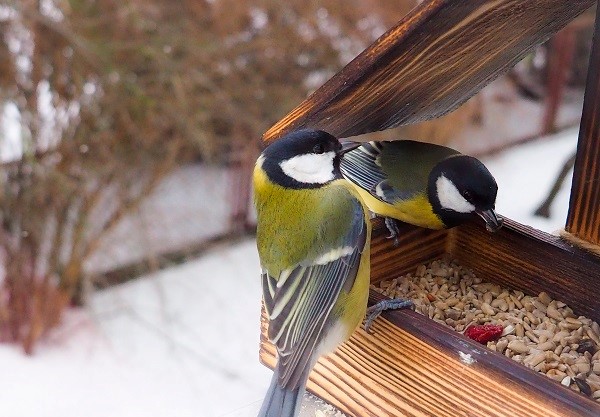
Feeding wild birds is a wonderful activity all year long, but the birds especially appreciate your efforts in winter and spring when natural food sources are scarce. Providing food for birds not only helps the birds, but all the bird activity and their bright colors and chatter will liven up an otherwise drab winter backyard.
Hanging out birdfeeders and filling them with birdseed may not be enough to attract birds to your yard. In addition to food, birds need water for drinking and bathing, along with nesting spots and shelter from predators.
A pond, stream or birdbath can satisfy birds’ needs for water. Birdbath heaters can be used to keep the water from freezing in cold climates. Some birds appreciate having a stone they can perch on in the birdbath while they get a drink.
Trees, shrubs, and vines provide nesting places and hiding spots if predators are nearby. From a bird’s point of view, a yard that is filled with a variety of both short and tall trees, bushes, vines, and brush piles is more attractive than a vast expanse of grass punctuated by the occasional small tree. If your yard isn’t a haven for birds, it can easily be transformed with the addition of a few trees and shrubs.
Evergreens of all kinds make excellent cover for birds, especially in winter when their dense foliage blocks the biting wind. Plants that have fruit that persists throughout winter are important food sources for birds. These would include bayberry, hackberry, flowering crabapple and juniper.
Plant sunflowers, coneflowers and black-eyed Susans, and allow them to go to seed. These plants will attract goldfinches and chickadees who will happily feast on the seeds and entertain you with their cheerful songs and antics.
Mike McGroarty is the owner of McGroarty Enterprises and the author of several books. You can visit his website at FreePlants.com and read his blog at MikeBackYardNursery.com.
Related Articles & Free Email Newsletter
Bring in the Birds with These Plants
Designing a Wildlife Friendly Landscape




Comment here